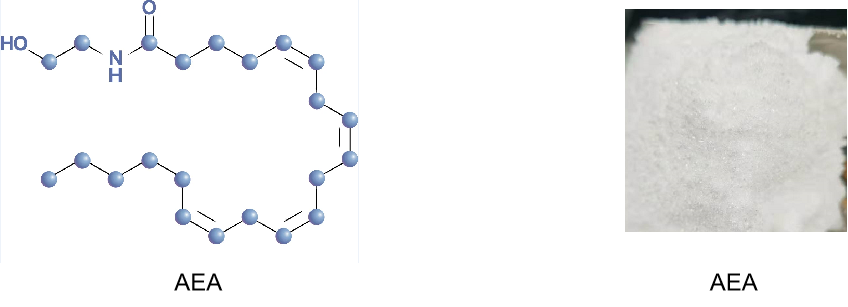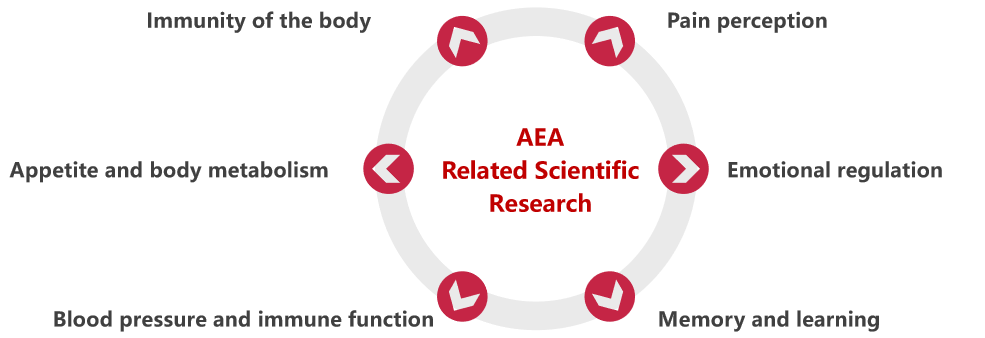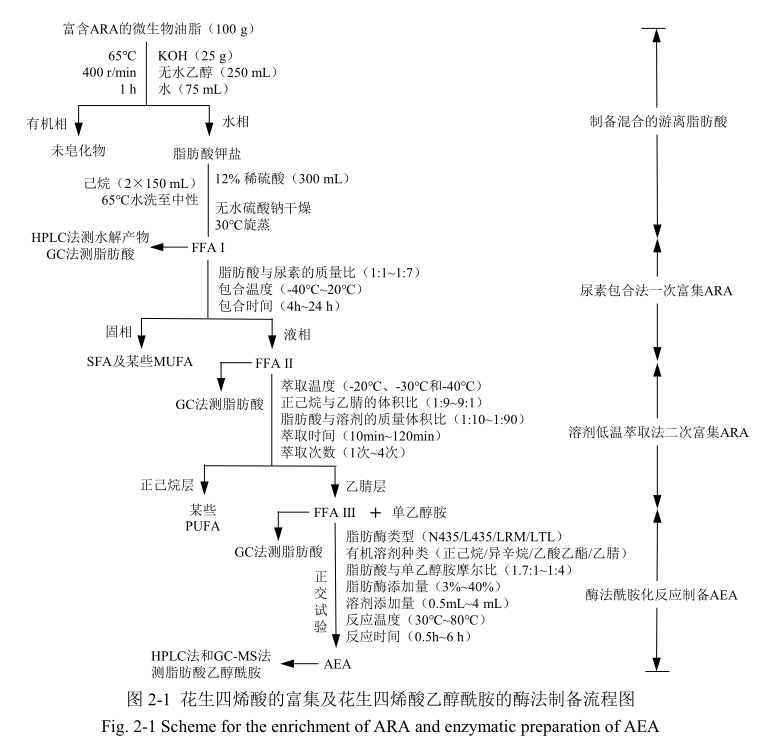
Exploring the mysteries of the brain: Endocannabinoids - the wonders of AEA
In the field of neuroscience, arachidonic acid glycolamide (AEA), as an important signaling molecule in the brain, has attracted increasing attention.
AEA is an endogenous bioactive lipid, which was first isolated and identified from the pig brain by Israeli scientists in 1992. Aea is considered to be an important part of the endocannabinoid system and is one of the endogenous ligands. AEA is synthesized by enzymatic reaction in the body, mainly exists in the brain and other tissues, and can interact with cannabinoid receptors in the body to regulate a variety of physiological functions.

Role of AEA
Memory and Learning: Research has found that AEA plays a key role in the learning and memory process. It is involved in the acquisition phase of memory and may influence the brain's learning function by regulating synaptic plasticity.
Memory can be divided into several stages, and AEA is often considered to be a powerful regulator of the memory acquisition stage. In fact, an early observation by MurilloRodriguez et al. [1] reported that AEA regulates multiple processes that ultimately drive memory acquisition. In this study, by using the avoidant inhibition paradigm experimental approach, the authors demonstrated the interaction of AEA with memory acquisition during the later phase of the test (24 hours after training), whereas this conditioning did not work within 15 minutes after training.
In the study, it was found that the multiple functions of AEA were not only reflected in the field of memory and learning, but also extended to neuroregulation, emotion regulation and other physiological and pathological processes.
Neuromodulation: AEA affects signal transmission between neurons and regulates neuronal activity by binding to CB1R receptors in the brain, thus affecting cognitive function, emotional regulation and pain perception.
Emotion regulation: AEA also plays an important role in emotion regulation. It interacts with neurotransmitters, stress responses, and emotion-related pathways, affecting the formation and regulation of emotions.
Pain perception: Cannabinoids are widely used in pain management, and the role of AEA has also been found to be closely related to the regulation of pain perception.
Regulating appetite and lipid metabolism: By interacting with cannabinoid receptors, AEA is able to influence appetite control in the body, thereby regulating lipid metabolic processes and contributing to weight management and the maintenance of metabolic health.
Heart and nervous system protection: AEA plays a protective role against neurodegenerative diseases by participating in processes such as glutamate transmission, oxidative stress and inflammatory response.
It can improve cardiovascular health and play an important role in neuroprotection and nerve regeneration.
Regulation of blood pressure and immune function: AEA can regulate blood pressure, enhance immune system function, and improve overall health.

Although AEA has many important biological activities in mammals, its content in body fluids is usually lower than the nmol/L concentration level, and its chemical structure is unstable, and it is easy to break the amide bond or the unsaturated double bond is oxidized. Therefore, it is usually difficult to extract AEA from natural resources, and the use of microbial oils as raw materials to prepare AEA by enzymatic method, improve the yield and purity, and provide possibilities for its application.
At present, AEA is synthesized from microbial oil rich in arachidonic acid by enzymatic catalysis. Wang Yingying et al. [2] of Jiangnan University used microbial oil rich in arachidonic acid as raw material, enriched the raw material by urea encapsulation and solvent extraction at low temperature, and synthesized AEA by enzymatic catalysis. This method achieves high efficiency synthesis at lower temperature and shorter time. Under optimized process conditions, the purity of AEA in the reaction product is as high as 84.51%.
This synthesis route (as shown in the figure) requires less lipase addition (15%), lower temperature (40℃) and shorter reaction time (1h). It is a green and efficient synthesis route, which provides a basis for the industrialization of AEA.

development prospect
The variation of AEA concentration in mammals is closely related to a variety of physiological processes and has wide application potential.
Medical applications: In-depth study of AEA's physiological activity and mechanism of action is expected to bring new treatments in the fields of obesity, cancer, mental illness and reproductive diseases.
Food and Drug Development: AEA's research contributes to the development of functional foods for weight management, as well as drugs to treat neurological disorders, driving the health industry.
In conclusion, AEA, as an important bioactive molecule, has extensive research value and application prospects. Future research will continue to aim to uncover its mechanism of action in physiological processes and promote its application in the medical and health industries

[1]Anandamide modulates sleep and memory in rats.
[2]Enzymatic preparation of arachidonic acid monoethanolamide.










